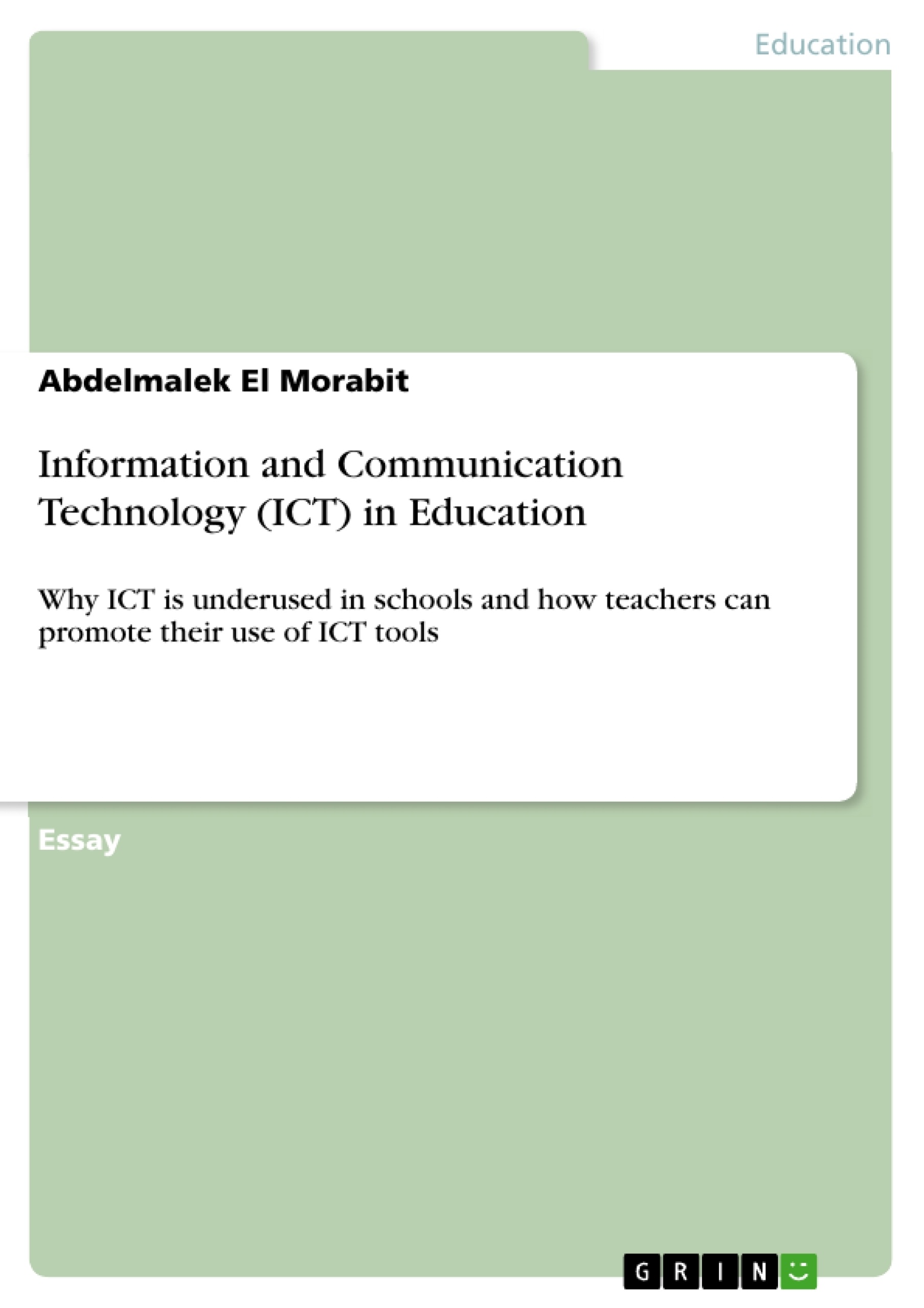There seems to be a growing consensus among researchers and practitioners in the educational arena that ICT is of great potential to bringing about changes in the field of education. Nevertheless, ICT tools, despite their abundance and ease of use and access, remain underused by many teachers. This being the case, this paper endeavors to shed light on some of the factors that stand in the way of an effective use of ICT tools in schools. Also, it draws on some recent models that have been proposed to address the factors in question in order to foreground some important teacher characteristics which appear to be necessary for effective use of ICT in education.
Table of Contents
- Abstract
- Introduction
- Setting the Ground
- The nature and scope of ICT in education
- Affordances of ICT in education
- ICT in education: past, present and future
Objectives and Key Themes
This paper aims to investigate the underutilization of ICT tools in schools and identify factors hindering their effective integration. It also explores teacher characteristics necessary for successful ICT implementation.
- Factors hindering effective ICT integration in schools
- Affordances of ICT in education for teachers and learners
- The evolution of ICT in education
- Necessary teacher characteristics for successful ICT integration
- Theoretical models for overcoming barriers to ICT integration
Chapter Summaries
Abstract: This abstract introduces the paper's focus on the underutilization of ICT in education despite its potential. It highlights the paper's aim to explore the factors hindering effective ICT use and identify necessary teacher characteristics for successful integration.
Introduction: The introduction establishes the context by discussing the existing research on ICT in education, contrasting the acknowledged potential of technology with its underutilization in schools. It outlines the paper's structure, focusing on exploring barriers to ICT integration and identifying key teacher characteristics for successful implementation. The introduction lays the groundwork for exploring the affordances of ICT and the models designed to help overcome obstacles to effective integration.
Setting the Ground: This section provides an overview of ICT in education, covering its nature, scope, evolution, and affordances. It defines ICT, examines its role in e-learning, and details the various advantages it offers both teachers and students, particularly emphasizing learner-centered approaches and competency-based learning. The historical development of ICT in education is briefly touched upon, acknowledging the complexities of tracing its relationship with language instruction and pedagogical approaches.
Keywords
ICT, education, affordances, teacher characteristics, CALL, e-learning, technology integration, pedagogical practices, learner-centered approach, barriers to integration, theoretical models.
Frequently Asked Questions: Comprehensive Language Preview
What is the purpose of this document?
This document provides a comprehensive preview of a paper investigating the underutilization of Information and Communication Technology (ICT) tools in schools. It aims to identify factors hindering effective ICT integration and explore necessary teacher characteristics for successful implementation.
What topics are covered in this paper?
The paper covers a range of topics related to ICT in education, including the nature and scope of ICT in education, its affordances for teachers and learners, the historical evolution of its use, factors hindering effective integration, necessary teacher characteristics for successful integration, and theoretical models for overcoming barriers to integration.
What are the key themes explored in the paper?
Key themes include the underutilization of ICT in schools, barriers to effective ICT integration, the affordances of ICT for both teachers and learners, the evolution of ICT in education, and the importance of specific teacher characteristics for successful ICT implementation. Theoretical models for addressing integration challenges are also explored.
What is the structure of the paper?
The paper is structured into sections including an abstract, introduction, a section setting the ground (covering the nature, scope, and affordances of ICT in education), and a conclusion implied by the chapter summaries. The preview also includes a list of keywords.
What does the introduction section cover?
The introduction provides context by reviewing existing research on ICT in education, highlighting the contrast between the acknowledged potential of technology and its underutilization in schools. It outlines the paper's structure and focuses on exploring barriers to integration and identifying key teacher characteristics for successful implementation. It also sets the stage for examining the affordances of ICT and models designed to address integration challenges.
What is covered in the "Setting the Ground" section?
This section offers a general overview of ICT in education, encompassing its nature, scope, evolution, and affordances. It defines ICT, examines its role in e-learning, and details its advantages for both teachers and students, with an emphasis on learner-centered approaches and competency-based learning. It also briefly touches upon the historical development of ICT in education.
What are the key factors hindering effective ICT integration, as discussed in the preview?
While not explicitly listed, the preview implies that the paper will examine various factors hindering effective ICT integration in schools. These factors are a central focus of the research.
What teacher characteristics are considered crucial for successful ICT integration?
The preview indicates that the paper will identify specific teacher characteristics necessary for the successful implementation of ICT in educational settings. These characteristics are a key area of investigation.
What keywords are associated with this paper?
Keywords include: ICT, education, affordances, teacher characteristics, CALL, e-learning, technology integration, pedagogical practices, learner-centered approach, barriers to integration, theoretical models.
What is the overall aim of the research presented in this preview?
The overall aim is to investigate the underutilization of ICT tools in schools, identify factors hindering their effective integration, and explore the teacher characteristics essential for successful ICT implementation.
- Citar trabajo
- Abdelmalek El Morabit (Autor), 2019, Information and Communication Technology (ICT) in Education, Múnich, GRIN Verlag, https://www.grin.com/document/464771




